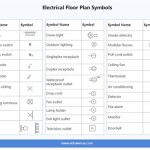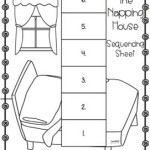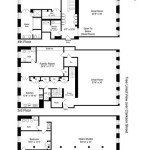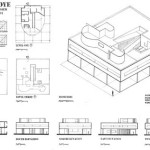Making Your Own House Plans: Essential Aspects to Consider
Designing your own house can be an incredibly rewarding experience, allowing you to create a space that perfectly suits your needs and desires. However, undertaking this task requires careful planning and an understanding of key architectural principles. Here are some essential aspects to consider when embarking on the journey of making your own house plans:
Site Analysis
Before you start sketching your house plans, it's crucial to thoroughly analyze the building site. This includes considering factors such as topography, sunlight exposure, drainage, and any existing structures or features on the property. Understanding the site's characteristics will help you design a house that seamlessly integrates with its surroundings.
Zoning and Building Codes
It's essential to familiarize yourself with the zoning regulations and building codes applicable to your area. These regulations may dictate aspects such as setbacks, lot coverage, and building height. Ensuring compliance with these codes is essential to avoid delays or legal issues during the construction process.
Functional Requirements
Determine the functional requirements of your house, including the number of bedrooms, bathrooms, and other spaces you need. Consider the daily routines and lifestyle of your family to create a layout that maximizes both functionality and comfort.
Flow and Circulation
The flow and circulation of your house plan are crucial for ease of movement and a harmonious living environment. Plan the placement of rooms and spaces thoughtfully to ensure smooth transitions between different areas. Ample circulation space and well-defined pathways are essential for creating a comfortable and inviting home.
Natural Lighting and Ventilation
Incorporate natural lighting and ventilation into your house plans to reduce energy consumption and promote a healthier living environment. Position windows and doors strategically to maximize sunlight exposure while also ensuring privacy. Consider using skylights or solar tubes to bring natural light into interior spaces.
Structural Integrity and Materials
Ensure the structural integrity of your house by choosing appropriate building materials and construction methods. Consider the local climate and seismic activity when selecting materials. Work with a licensed contractor or engineer to ensure that your plans comply with building codes and meet industry standards.
Sustainability and Energy Efficiency
In today's eco-conscious world, incorporating sustainable and energy-efficient features into your house plans is essential. Use energy-efficient appliances and fixtures, consider renewable energy sources, and design your house to minimize energy consumption. By embracing sustainable practices, you can create a home that is both environmentally friendly and cost-effective to operate.
Customization and Personalization
Making your own house plans offers the unique opportunity to customize your home to reflect your personal style and preferences. Incorporate architectural details, finishes, and decor that align with your taste and create a space that truly feels like your own sanctuary.
Remember, designing your own house is an iterative process that requires patience and attention to detail. By carefully considering these essential aspects and seeking professional guidance when necessary, you can create a house plan that not only meets your needs but also exceeds your expectations.

House Plans And Design

Designing My Own House

House Plans And Design

House Plans How To Design Your Home Plan

My Own House Design Model Free 3d Floor Plans By Planner 5d

Vignette Design Bucket List 7 Build A House From Scratch

Featured House Plan Bhg 8993

Best Of Draw My Own House Plans Check More At Http Www Jnnsysy Com Ranch Floor Home Design

How To Read A Floor Plan And Design The Perfect Home For You

Southern Style House Plan 1 Beds Baths 848 Sq Ft 45 252 Floorplans Com








